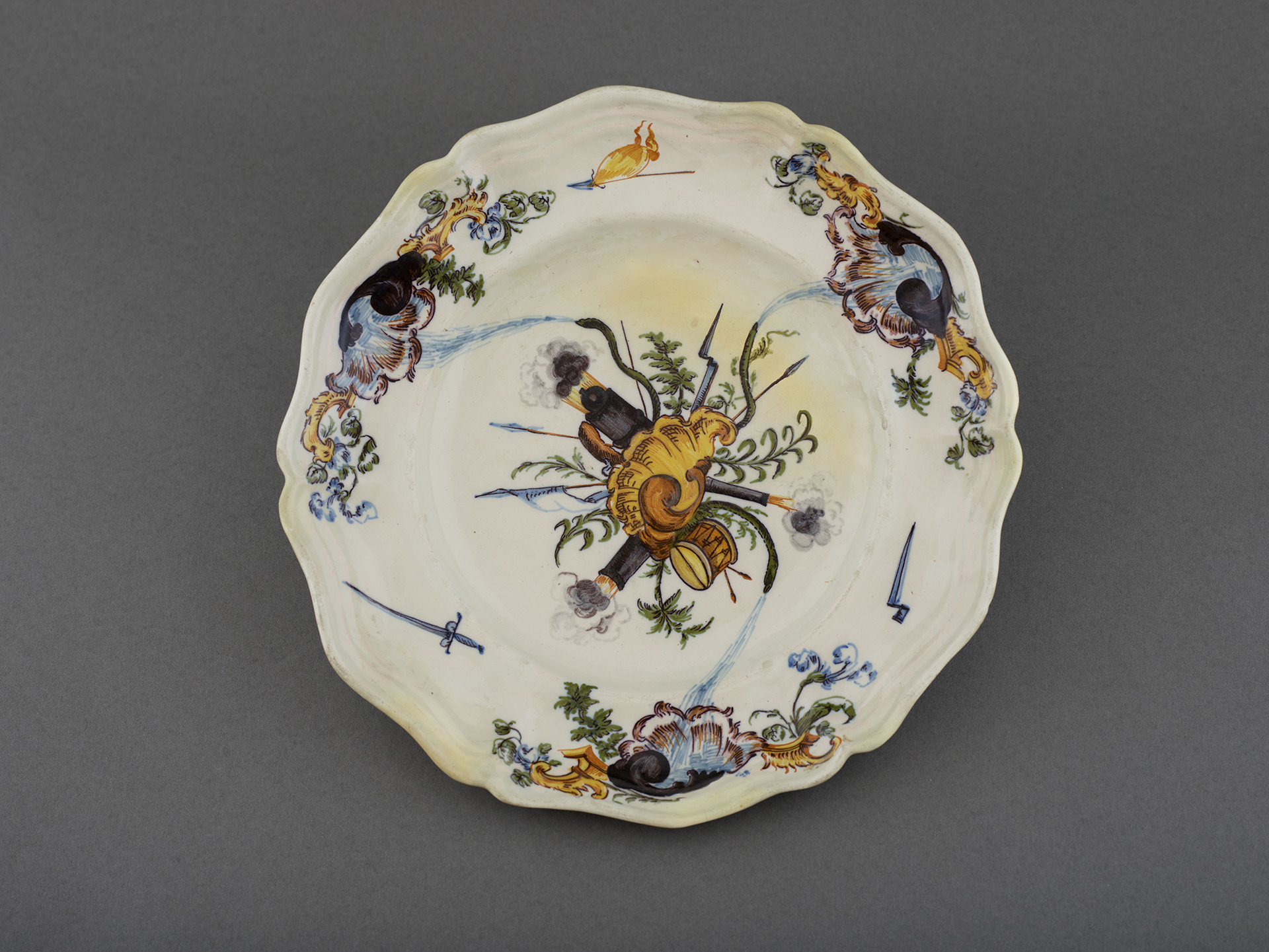
Manufactura de Alcora
Plate
Trophy series (1764-1775)
WORK INFORMATION
Ceramic, polychrome earthenware, diam. 28 cm
The Alcora manufactory was founded in 1727 by the 9th Count of Aranda on land he owned in what is now the province of Castellón. The aim was to create a luxury earthenware and porcelain factory that would compete with foreign manufactories. Royal privileges, including tax exemption on the export of pieces and the free entry of materials from abroad, allowed this manufactory to operate until the middle of the 19th century despite the fact that it barely made any profits.
Throughout its existence, the factory became a model of organisation and a point of reference in terms of aesthetics thanks to the recruitment of foreign specialists, artists and “secretists” who claimed to know the secret of porcelain manufacture. In addition, the creation of an apprentice academy enabled the manufactory to continue to provide top quality production.
This plate belongs to the establishment’s second period (1749-1786), which began when Pedro Pablo, son of the 9th Count of Aranda, inherited the factory. The 10th Count was the Spanish ambassador in Paris and was in contact with the Encyclopaedists. His curiosity led him to search for the formula for porcelain, but he only managed to obtain a material that was similar to French soft paste and English pipe clay.
The complexities of the factory became a source of unrest, leading to resignations and the creation of other workshops that tried, without much success, to imitate Alcora ceramics. For this reason, the Alcora factory requested an order from the King allowing it to identify its products with an “A”. In 1789, the “fabriquetas” [“pottery shacks”] – as they were derisively called – were closed down by royal decree.
This plate with a lobed rim displays the typical decoration of the trophy series, described by Mamés Lalana – manager of the Alcora factory from 1766 – as “another kind of painting [...] which is made up of cannons, mortars, drums and flags, with other instruments of war with their corresponding decorations”. While the Fouque et Pelloquin factory in Moustiers used the ornamentation known as décor aux drapeaux (flag decoration), the Alcora trophies are completely different and are dated at least a decade later. In fact, the decoration of military trophies originated in classical antiquity and was revived in the 16th century for the ornamentation of ceramics, and especially for application in architecture. The love of this ornamentation increased in the mid-18th century thanks to the archaeological discoveries in Pompeii, Herculaneum and Rome, and lasted until the 20th century.

